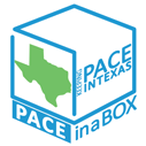
Last year, the Texas legislature passed statewide legislation enabling cities to use their property assessments as a way to finance clean energy and energy efficiency for industrial, agriculture, water, and commercial buildings. This innovative financing tool, generally referred to as property-assessed clean energy (PACE), has the potential to unlock a considerable amount of funding for both renewable energy and energy efficiency projects in the state, while simultaneously offering building owners cheaper financing options and secure repayment through their property assessment.
While PACE holds great promise in Texas with its over 1,200 incorporated cities, stakeholders have expressed concern that each of these cities could develop its own program with unique requirements, leading to confusion and creating bottlenecks for a successful roll-out. A consistent approach to PACE implementation and program rules would, however, vastly increase the chances of success.
In order to get ahead of this potential issue and create the consistency desired by all, Keeping PACE in Texas, a non-profit devoted to bringing PACE programs to Texas, has been working with a wide array of stakeholders to develop a do-it-yourself toolkit, called “Pace in a Box.” This toolkit provides local Texas officials with a set of necessary steps, program rules, and technical requirements. Pace in a Box, released today, will facilitate a consistent statewide approach to implementing PACE financing as well as allow local Texas governments to establish effective PACE programs quickly and economically.
Pace in a Box will include energy efficiency protocols developed by EDF’s Investor Confidence Project (ICP) as its recommended standard for developing projects, estimating energy and financial savings, and documenting and verifying results. By establishing a standardized process, the ICP Protocols will allow investors, building owners, and energy service companies to deploy PACE at scale in Texas. Input from stakeholders has shown that consistency and standardization are critical to growing the market and attracting investors.
Embedding ICP’s standards into the PACE in a Box toolkit not only creates consistency across the state of Texas, but also aligns the state with a growing number of national programs and investors. Ultimately, this could create an energy efficiency market on a national level.
Keeping PACE in Texas also avoided the costly and time-consuming process of developing proprietary program standards by using the ICP framework in its toolkit. Keeping PACE in Texas released the first version of its PACE in a Box toolkit this week to solicit feedback from stakeholders before launching a finalized version, scheduled for May 30, 2014.
The incorporation of ICP’s standards into the Pace in a Box toolkit reflects ICP’s growing momentum across the country as well as its rapidly-expanding Ally Network, which includes over 70 partners from both private industry and investors as well as an ever-expanding set of public programs.

 RSS Feed
RSS Feed